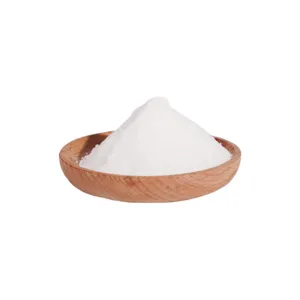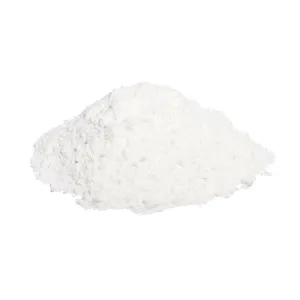686
November 26, 2024, 4:01 PM
China's aggressive entry into the liquid crystal display (LCD) panel and TV markets has posed major challenges to South Korean TV makers Samsung Electronics and LG Electronics. The restructuring of the LCD panel supply chain led by China is rapidly weakening the bargaining power of two South Korean companies on raw material prices. In addition, led by mini light-emitting diode (LED) technology, China TV manufacturers are accelerating their entry into high-end markets.
According to the third-quarter financial results released by Samsung Electronics and LG Electronics on November 17, the purchase cost of display panels for the TV business of the two companies increased significantly compared with the previous year.
Samsung Electronics said that the cumulative purchase amount of display panels in the third quarter increased to 5.9019 trillion won (30.63086 billion yuan), an increase of more than 1.5 trillion won from 4.3764 trillion won in the same period last year; the proportion of procurement costs in the overall business also increased from 8.8% in the third quarter last year to more than 10% in the first quarter of this year, and further rose to 11.2% in the third quarter. On a quarterly basis, the purchase amount increased slightly from 1.9091 trillion won in the first quarter to 1.9219 trillion won in the second quarter, and exceeded 2 trillion won in the third quarter, continuing the upward trend. Samsung Electronics said prices of display panels for TVs and monitors rose 11% in the third quarter compared with the same period last year.
Lejin Electronics said that the purchase amount of LCD modules for TV displays has also increased from 2.4557 trillion won to 3.0070 trillion won (15.60633 billion yuan); the proportion of procurement costs in the overall business has increased from 38.9% last year to 42.4% this year. Samsung Electronics and LG Electronics both use LCD panels supplied by China companies such as BOE and CSOT.
Due to the sluggish information technology (IT) equipment market, overall demand for LCD displays has been sluggish, but panel prices have not dropped due to artificial production capacity controls by China panel manufacturers. According to market research firm DSCC, operating rates at LCD panel factories in China rose slightly from 77% in the first quarter to 85% in the second quarter, and then fell to 84% in the third quarter. This trend is expected to continue in the fourth quarter.
China panel manufacturers, which usually stop work for one to two days during the National Day holiday, will stop production for one to two weeks this year. It is expected that the operating rate of LCD panel factories will drop to 78% in the fourth quarter, down about 7 percentage points from 85% in the third quarter. DSCC analysis said that due to these measures, LCD panel prices will not fall until January next year, and said that "China companies are sending signals that they will continue to control panel supply through production suspension."
China was able to artificially control prices because competitors from South Korea, Japan and other countries withdrew from the LCD display market, allowing China companies to occupy a dominant position in the market. LG Display sold its Guangzhou LCD factory to China Star Optoelectronics in September this year and officially withdrew from its large size LCD panel business. Sharp of Japan also stopped production of large size LCD panels during this period. Although AUO continues to operate the LCD panel business, its output is too small to change market dynamics.
Weakening price competitiveness is leading to the rise of China companies in the TV market. China TV manufacturers are ensuring price competitiveness by building vertically integrated systems of panels and televisions, and expanding their high-end business with Mini LED and QD-LCD products based on LCD technology.
For example, TCL has increased sales of ultra-large TVs over 80 inches by purchasing relatively cheap LCD panels from its subsidiary China Star Optoelectronics. Samsung Electronics and LG Electronics have been purchasing large quantities of panels by group subsidiaries to enhance their competitiveness in the TV market, a strategy that is currently being replicated by China companies.
This is also reflected in the market share. According to market research firm Counterpoint Research, in the third quarter of this year, Samsung Electronics 'market share in the high-end TV market (based on shipments) plummeted from 43% in the same period last year (ranked first) to 30%(ranked first). LG Electronics dropped from 20% in the past (ranked second) to 16% this year (ranked fourth).
At the same time, Hisense's market share increased from 14% to 24%(ranking second), and TCL's market share increased from 11% to 17%(ranking third). Shipments of Mini LED TVs, mainly produced by China companies, increased by 102% year-on-year, surpassing organic light-emitting diode (OLED) TVs, mainly produced by South Korean companies. The output of QD-LCD products in China has also increased by more than 50%.
An industry insider in South Korea said: "China companies are at a disadvantage in TV panel price negotiations because they have no alternative supply chain. The worst-case scenario for the China government to push LCD display prices to continue to rise." Operating rates at LCD panel factories in China are expected to decline further as the fourth quarter progresses, potentially exacerbating the challenges facing South Korean TV makers. Market dynamics suggest that China companies will continue to use control of supply chains to maintain high prices, putting additional pressure on competitors such as Samsung Electronics and LG Electronics.














